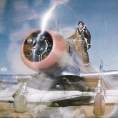Two Lessons From The DCA Crash
-
Members Online
- varlajo
- natdm
- mooneyflyfast
- Schllc
- Bartman
- PT20J
- ElkoRandy20J
- kortopates
- AndreiC
- Mister_Bevilaqua
- ELysek1
- gabez
- scu2025
- Blaze
- georgewdean1020
- Skates97
- goalstop
- dkkim73
- PatrickM
- DCarlton
- KLRDMD
- buddy
- Grumpy
- MrFritz
- Thedude
- TCC
- PaulM
- redbaron1982
- affricate
- Vance Harral
- Yetti
- M20S Driver
- chips452
- PilotX


Recommended Posts
Join the conversation
You can post now and register later. If you have an account, sign in now to post with your account.